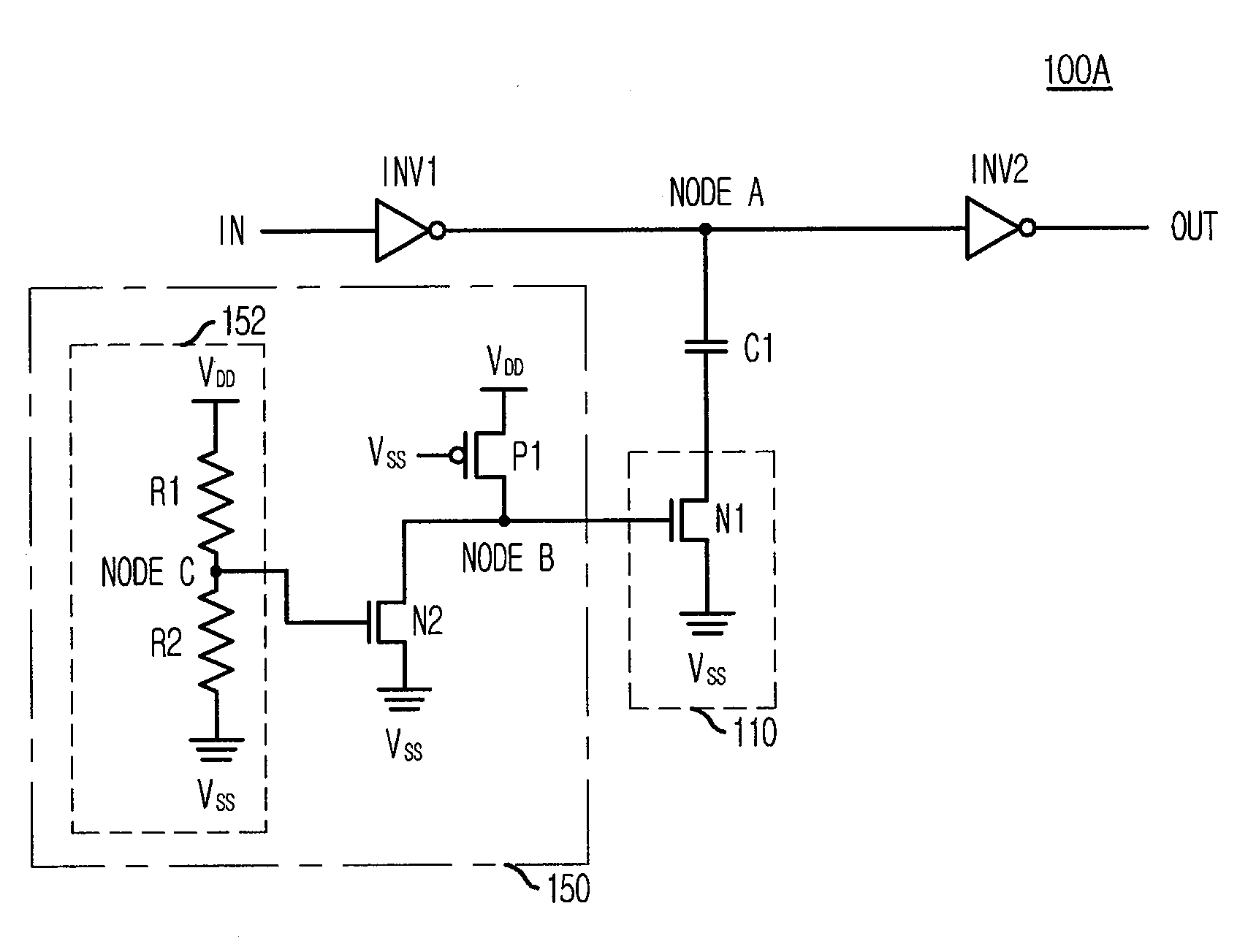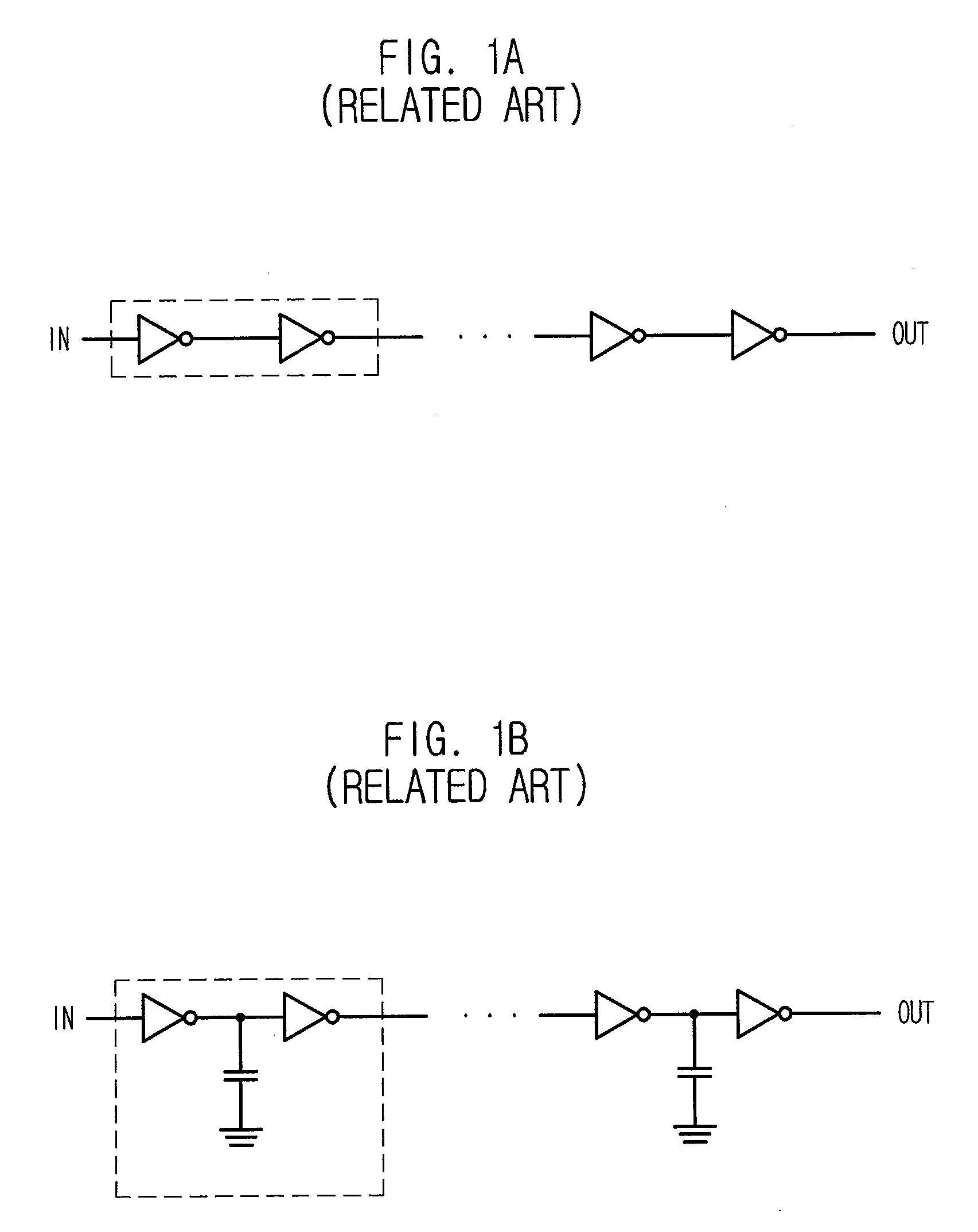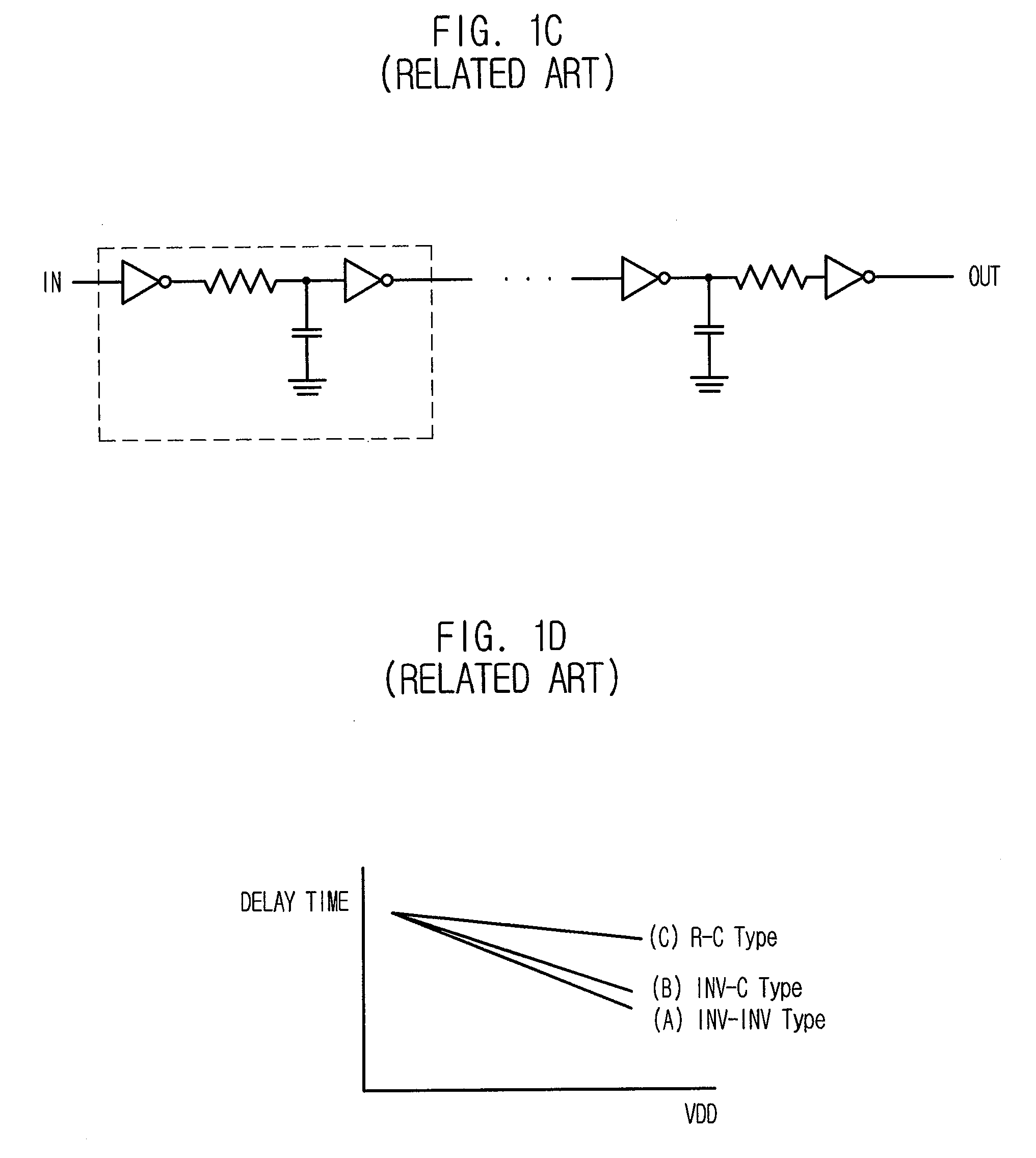Delay circuit
a delay circuit and delay time technology, applied in the field of semiconductor devices, can solve the problems of not being able to independently control or adjust the delay time according, and achieve the effect of rapidly changing the load capacitance or resistance, and easily controlling the delay time dependen
- Summary
- Abstract
- Description
- Claims
- Application Information
AI Technical Summary
Benefits of technology
Problems solved by technology
Method used
Image
Examples
first embodiment
[0036]FIG. 2A is a circuit diagram of a delay circuit in accordance with the present invention.
[0037]The delay circuit 100A includes first and second inverters INV1 and INV2, a capacitor C1, a switching unit 110, and a power supply voltage detector 150. The capacitor C1 has one terminal connected to a node A of a delay line IN-OUT, and the switching unit 110 is connected between the other terminal of the capacitor C1 and a ground terminal VSS. The power supply voltage detector 150 detects whether a power supply voltage VDD is higher or lower than a predetermined threshold voltage, and controls on / off operation of the switching unit 110. The threshold voltage is a preset voltage and can be changed by a designer.
[0038]The power supply voltage detector 150 turns off the switching unit 110 when the power supply voltage VDD is higher than the threshold voltage, and turns on the switching unit 110 when the power supply voltage VDD is lower than the threshold voltage.
[0039]The switching un...
second embodiment
[0048]FIG. 3A is a circuit diagram of a delay circuit in accordance with the present invention. The delay circuit 100B includes first and second inverters INV3 and INV4, a capacitor C2, a switching unit 120, and a power supply voltage detector 160. The delay circuit 100B further includes a third inverter INV5 in comparison with the delay circuit 100A.
[0049]The third inverter INV5 is connected between the power supply voltage detector 160 and the switching unit 120. Unlike the delay circuit of FIG. 2A, the delay circuit of FIG. 3A turns off the switching unit 120 when the power supply voltage VDD is lower than the threshold voltage, and turns on the switching unit 120 when the power supply voltage VDD is higher than the threshold voltage.
[0050]Consequently, the capacitor does not act as the load in the delay line IN-OUT when the power supply voltage VDD is lower than the threshold voltage. On the other hand, the capacitor acts as the load in the delay line IN-OUT when the power suppl...
third embodiment
[0056]FIG. 4A is a circuit diagram of a delay circuit in accordance with the present invention.
[0057]The delay circuit 200A includes first and second inverters INV6 and INV7, a capacitor C3, a first resistor R3, a switching unit 210, and a power supply voltage detector 250. The first resistor R3 is connected between an output terminal of the first inverter INV6 and an input terminal of the second inverter INV7. The first inverter INV6 and the second inverter INV7 constitute a delay line IN-OUT. The switching unit 210 is connected in parallel to the first resistor R3 between the output terminal of the first inverter INV6 and the input terminal of the second inverter INV7. The power supply voltage detector 250 detects whether a power supply voltage VDD is higher or lower than a desired threshold voltage, and controls on / off operation of the switching unit 210.
[0058]The power supply voltage unit 250 turns on the switching unit 210 when the power supply voltage VDD is higher than the th...
PUM
 Login to View More
Login to View More Abstract
Description
Claims
Application Information
 Login to View More
Login to View More - R&D
- Intellectual Property
- Life Sciences
- Materials
- Tech Scout
- Unparalleled Data Quality
- Higher Quality Content
- 60% Fewer Hallucinations
Browse by: Latest US Patents, China's latest patents, Technical Efficacy Thesaurus, Application Domain, Technology Topic, Popular Technical Reports.
© 2025 PatSnap. All rights reserved.Legal|Privacy policy|Modern Slavery Act Transparency Statement|Sitemap|About US| Contact US: help@patsnap.com



